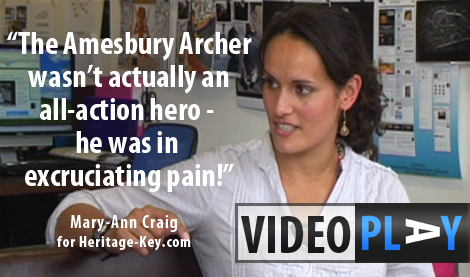You might never have heard of Irthlingborough, in Northamptonshire, but an excavation there in the 1980s revealed some pretty spectacular archaeology, as explained in the first of a series of HKTV videos (Watch the Video). The archaeologists found a round burial mound with cremations buried in the sides. Below the cremation burials, there was a lattice of rotted cattle bones, which had been placed on the top of a heaped stone cairn. Below the cairn was a wooden platform that had now collapsed, and below the platform, at the heart of the mound, was a chamber, with a mans body…

